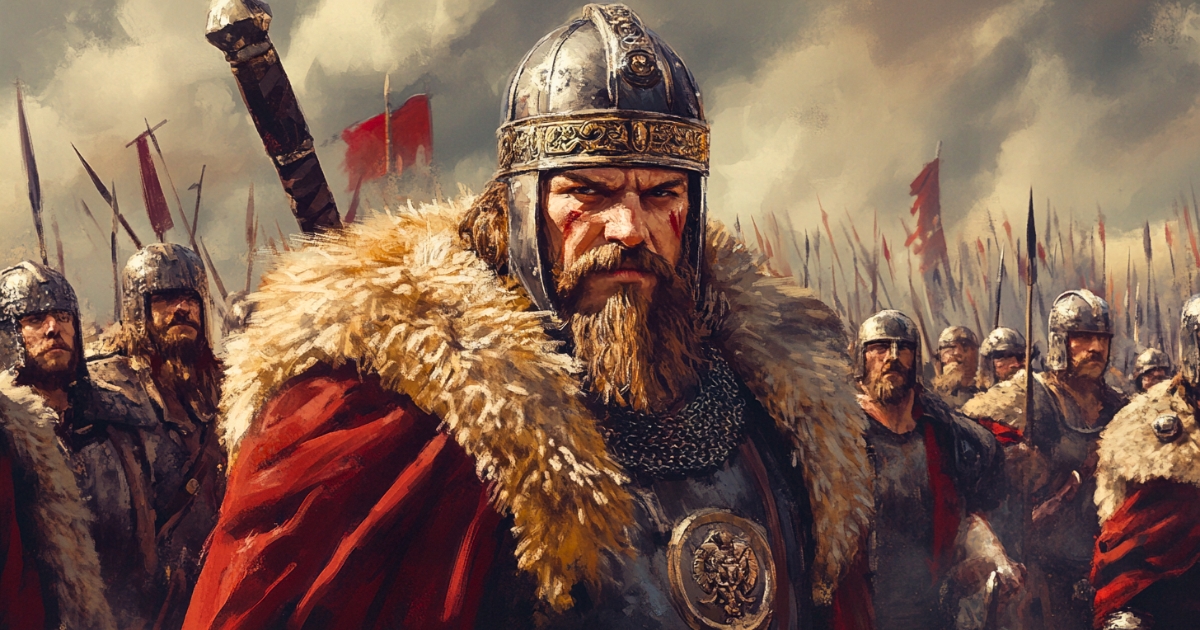- Introduction
- Origins and Migration of the Huns
- Attila’s Origins and Rise to Power
- Military Strength and Strategy of the Huns
- Conflict with the Western Roman Empire
- The Battle of the Catalaunian Plains
- Invasion of Italy and Retreat
- Attila’s Death and the Collapse of the Hun Empire
- Attila’s Legacy and Influence
- Evaluation of Attila
- Conclusion
Introduction
In the mid-5th century, during the decline of the Western Roman Empire, a figure emerged who shook Europe to its core. His name was Attila. Known as the king of the Huns and feared as “God’s Scourge,” his presence had a profound impact on Europe of the time. This article will examine Attila’s life and conquests in detail, while considering the influence he had on late ancient Europe.
Origins and Migration of the Huns
The Huns are believed to have been a nomadic people from Central Asia. Their westward migration is thought to have begun around the 4th century, triggering the Great Migration of Germanic peoples. The movement of the Huns brought significant changes to Europe’s ethnic composition and would have important consequences for later history.
Attila’s Origins and Rise to Power
Attila is believed to have been born around 395 CE in the area of present-day Hungary. Much of his early life is unclear, and the once-claimed experience of being a hostage in the Roman Empire is now considered to lack reliable historical evidence.
In 434, Attila became co-ruler of the Huns alongside his brother Bleda. However, in 445, he killed Bleda and became the sole ruler. This event demonstrated Attila’s ambition and attachment to power.
Military Strength and Strategy of the Huns
Attila’s Hun army was primarily composed of cavalry units. Their strengths lay in their high mobility and skillful archery. The ability to shoot arrows accurately from horseback was a capability that European armies of the time lacked.
Attila was also adept at psychological warfare. He exaggerated accounts of his army’s brutality to instill fear in his enemies. As a result, many cities surrendered without a fight.
Conflict with the Western Roman Empire
Attila first attacked the Eastern Roman Empire (Byzantine Empire), successfully obtaining large amounts of tribute. He then advanced westward, deepening his conflict with the Western Roman Empire.
In 447, Attila ravaged the Balkan Peninsula and approached the walls of Constantinople. At this time, the Eastern Roman Empire made peace by paying an enormous tribute.
The Battle of the Catalaunian Plains
In 451, Attila led a large army to invade Gaul (modern-day France). At this time, the Western Roman general Aetius formed an alliance with his former enemies, the Visigoths, to counter Attila.
The two armies clashed on the Catalaunian Plains (in present-day northeastern France). This battle is considered one of the largest engagements in late ancient Europe. There are differing views on the outcome: some say the combined forces of the Western Roman Empire and the Visigoths repelled Attila’s Huns, while others argue that the battle was inconclusive. After the battle, Attila retreated to his territory, but this may have been a tactical decision.
Invasion of Italy and Retreat
The following year, 452, Attila invaded Italy. He captured cities like Milan and Pavia in succession and began his march on Rome.
However, Attila met with Pope Leo I near the Mincio River in the vicinity of Rome and subsequently abandoned his invasion of Rome. This decision is thought to have been influenced by multiple factors, not just the meeting with the Pope, but also the spread of disease, food shortages, and rumors of reinforcements being sent by the Eastern Roman Empire.
Attila’s Death and the Collapse of the Hun Empire
In 453, Attila died suddenly on the night of his wedding to a new wife. There are various theories about the cause of his death, including suffocation from a nosebleed and assassination. The exact cause remains unknown.
After Attila’s death, internal conflicts arose among his sons, and the Hun Empire rapidly weakened. As a result, the Germanic tribes that had once been subordinate to the Huns gained independence, leading to the collapse of the Hun Empire.
Attila’s Legacy and Influence
Attila’s invasions dealt a fatal blow to the already declining Western Roman Empire. Just over 20 years after his death, the Western Roman Empire fell.
On the other hand, Attila’s invasions also became an opportunity for European peoples to unite. In particular, it can be said that this led to an increase in the influence of the Catholic Church.
Attila’s brutality was passed down through generations, giving rise to many legends. The epithet “God’s Scourge” was also born from these legends.
Evaluation of Attila
Attila is often portrayed as a “destroyer” due to his military talent and brutality. However, there is also a view that evaluates him as a “hero” who united the Huns into a powerful state. His evaluation varies greatly depending on the era and perspective.
Conclusion
Attila had a significant impact on 5th century Europe. His invasions accelerated the collapse of the Western Roman Empire and greatly reshaped the political map of Europe.
However, the evaluation of Attila is not simple. He was both a destroyer and a creator of a new order. Without his existence, the process of forming medieval Europe might have been very different.
Attila’s life demonstrates the possibility that a single individual can greatly change the course of history. His deeds provide us, living in the modern era, with many insights into power, violence, and the vulnerability of civilization. At the same time, it teaches us that a multifaceted perspective is necessary when evaluating historical figures.


